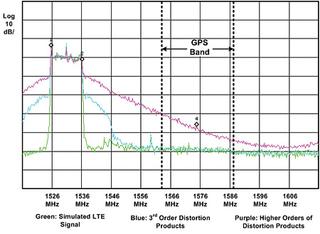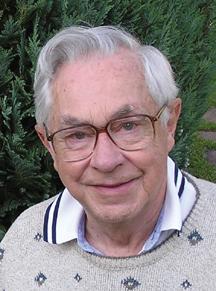Charles W. Rhodes
Latest articles by Charles W. Rhodes

Eleven FCC Scenarios for The 600 MHz Band Plan
By Charles W. Rhodes published
In its recent Report and Order, the FCC revealed 11 scenarios under consideration for a 600 MHz Band Plan following the spectrum auctions.

Some Hope for Interference Issues
By Charles W. Rhodes published
The most amazing finding from the FCC tests of converter boxes is the number of such toxic channel pairs there are.

Detecting Unique DTV Reception Problems
By Charles W. Rhodes published
His trouble started suddenly one evening when he discovered interference across the high VHF band that he had never had before.

The Effects of ACI on UHF Channel Allotments
By Charles W. Rhodes published
Last month, this column introduced a scheme for allocating UHF band channels by analyzing a set of contiguous channels for a given community.

Auction Over, Now Let’s Assess the Damage
By Charles W. Rhodes published
With the end of the FCC’s spectrum auction in January, it’s time to measure its damaging effects on broadcasters.

The FCC’s DTV Interference Dilemma
By Charles W. Rhodes published
By now almost everyone knows the NAB has filed a lawsuit against the FCC over its spectrum auctions TV channel repack.

Laboratory Simulations of a Single Frequency Network
By Charles W. Rhodes published
There are no minimum performance specs in the FCC rules, and in fact, the FCC does not have authority to set them.

Seeing Ghosts on a Single Frequency Network
By Charles W. Rhodes published
Ghosts of DTV signals could easily be seen on analog TV screens, but with DTV, they are invisible on the TV screen.

Could Broadcasting’s Future Hinge on Changes to OET-69?
By Charles W. Rhodes published
Without any changes to OET-69, the commission could not take up any additional planning criteria such as interference between DTV signals having a channel relationship other that N±1 and N.

Minimizing DTV Interference After Channel Repacking
By Charles W. Rhodes published
Last month we discussed the restrictions that the FCC must work under in repacking UHF broadcast spectrum.

Repacking Likely to Multiply Interference
By Charles W. Rhodes published
The FCC recently released details of how it will repack remaining TV spectrum in the UHF band.

Update: Testing Interference to GPS by LightSquared Signals
By Charles W. Rhodes published
The FCC has a spectrum utilization committee, which is now studying all the test data. When they will finish these studies is not yet known.

SFN Reception Could be Problematic With ATSC
By Charles W. Rhodes published
Lagging echoes are more the serious problem

A New Kind of FMI on The Horizon?
By Charles W. Rhodes published
FMI now has three aspects.

DTV Interference on VHF Channels 4–13
By Charles W. Rhodes published
Such second-order distortion products may be generated by strong local FM radio signals in the front end of DTV receivers and downconvertors.

Making 'Noise' About DTV Received Power
By Charles W. Rhodes published
As many DTV signals are radiated in the UHF band with more than this power, they enjoy some signal level margin within their coverage area.

Obstacles to DTV Reception(2)
By Charles W. Rhodes published
Our friend reminded us that the day we came was warm and sunny, and when it rains, that channel simply vanishes.

Testing SFNs for ATSC Reception
By Charles W. Rhodes published
Could an SFN support our ATSC standard, or would we have to change our DTV standard to embrace COFDM and thereby obsolete millions of receivers?

An Emergency Alert System for the Digital Era
By Charles W. Rhodes published
What is needed is an EAS which can alert the threatened populace while not scaring the entire nation. Our present EAS cannot do this, but a well designed Digital EAS could over our DTV channels.

More Examples of Interference From Unlicensed Devices
By Charles W. Rhodes published
The IEEE Consumer Electronics Society celebrated its 75th anniversary at the International Conference on Consumer Electronics in January, along with the Consumer Electronics Show in Las Vegas.
Get the TV Tech Newsletter
The professional video industry's #1 source for news, trends and product and tech information. Sign up below.


